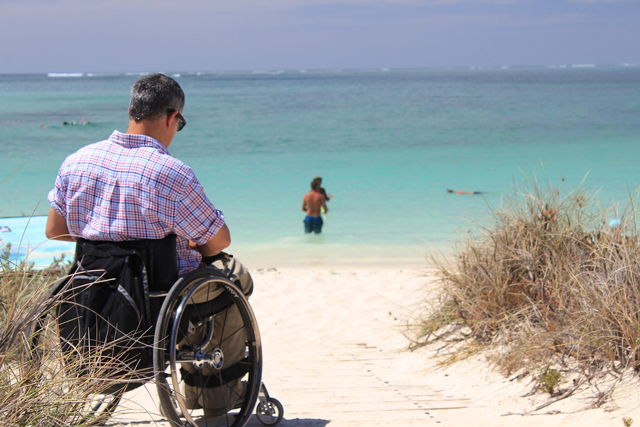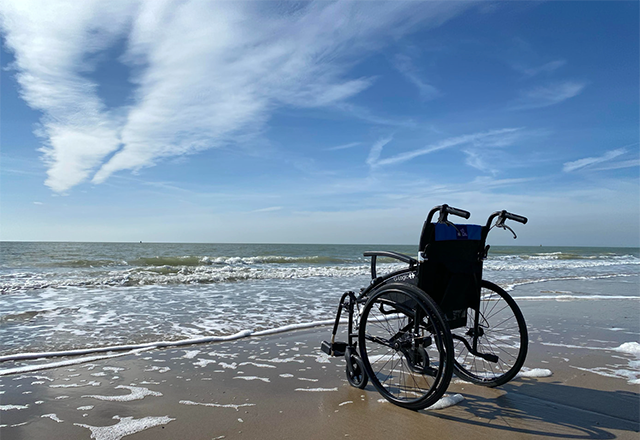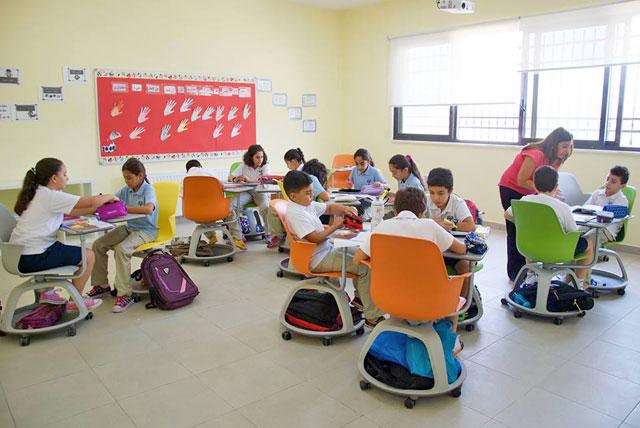You are here
Accessibility issues remain a barrier at Jordan’s tourist attractions
By Mays Ibrahim Mustafa - May 24,2023 - Last updated at May 24,2023

Representative image (Photo courtesy of pixabay/Tony Laws)
AMMAN — The majority of Jordan’s tourism attractions are marked by poor accessibility standards despite some progress, according to activists.
Last week, Director of the Jerash Tourism Directorate, Firas Khatatbeh announced the launch of a project which aims to increase the accessibility of archaeological sites in Jerash for persons with disabilities, Al Mamlaka TV reported.
Ezzat Dablan, a content creator and social media influencer, uses a wheelchair for movement due to a mobility disability. In an attempt to fight stereotypes and advocate for disability inclusion, he is leading an initiative on various social media platforms called “Ezzat Experience”.
Dablan shares short videos, documenting his experience upon visiting tourism attractions and public spaces, such as beaches, places of worship, parks and bus stations, among others.
“It’s my way of fighting for what I and other people with disabilities deserve,” he told The Jordan Times.
Dablan visited various tourism sites in Jordan to test whether a wheelchair user can enter them and use their facilities unassisted. He believes that Jordan has “a long way to go” in order to become a fully accessible and inclusive tourism destination.
“It’s disappointing that a trip to any beach in Jordan appears to be off limits for any person with a disability,” he said.
Dablan noted that, aside from making beach facilities such washrooms and bathrooms accessible, “simply” installing rubber pathways would make a huge difference at a low cost.
He noted that there are some sites with accessibility considerations, such as the site of the Cave of the Seven Sleepers, which has ramps for wheelchair users. However, the majority of tourism sites are “impossible” to enter for someone with a disability, he added.
For example, the Baptism Site of Jesus Christ and the Ma’in Hot Springs, which is considered a medical tourism destination, are “not accessible” for people with mobility disabilities and the elderly, according to Dablan.
There are also many shortcomings in terms of facilities, such as the size of bathrooms, the way their doors open and the height of sinks at some hotels and many tourism attractions, he noted.
Hadeel Abu Sofeh, also a wheelchair user and an activist, led a campaign promoting disability-inclusive travel and tourism in 2014 while documenting the barriers she faced on her trips to tourism sites in Jordan. Abu Sofeh told The Jordan Times that “little progress” has been made since then.
“Persons with disabilities have a right to participate in cultural life and entertainment activities. It’s a right that is even overlooked, although it’s no less important than the right to education and decent work,” she said.
Abu Sofeh pointed out that aside from shortcomings related to essential facilities like bathrooms, most archaeological sites are “impossible” to navigate with a wheelchair. A camping trip to Wadi Rum isn’t an option for a wheelchair user and “not one beach in Jordan is disability-inclusive,” she added.
She also stressed that it’s necessary to engage people with disabilities in the planning and implementation process of accessibility projects.
“The Ministry of Tourism and Antiquities has announced plans to increase accessibility, but for such projects to be truly successful and empowering, it’s absolutely necessary to engage people with disabilities and consider their input as decision makers and their feedback as beneficiaries,” said Abu Sofeh.
Rawan Barakat, a disability activist who is blind, said that disability awareness is as essential as ensuring that tourism-related facilities meet all accessibility checkpoints.
“There need to be clear policies and specialised training for the staff working at tourism facilities, such as restaurants and airports, on how to assist persons with disabilities,” she told The Jordan Times.
Barakat added that some accessibility solutions are “very affordable”; for example, floating ropes can make blind people’s experience at the beach much more “enjoyable” and “independent”.
She also noted that the economic return of making tourism accessible outweighs the costs.
“Understanding the needs of people with disabilities and making basic adjustments to facilities is an investment that will inevitably boost the competitiveness of Jordan’s tourism sector and increase the number of visitors,” Barakat said.
An estimated 1.3 billion people experience significant disability. This represents 16 per cent of the world’s population, or one in six of us, according to the WHO.
Article 30 of the Convention on the Rights of Persons with Disabilities has established tourism and leisure as human rights to be enjoyed by all citizens, including those with disabilities.
“States Parties recognise the right of persons with disabilities to take part on an equal basis with others in cultural life, and shall take all appropriate measures to ensure that persons with disabilities… have access to services from those involved in the organisation of recreational, tourism, leisure and sporting activities,” it states.
Related Articles
AMMAN — Jordan's tourist attractions remain largely inaccessible for people with disabilities, propelling a “persistent demand” from activis
AMMAN — With less than 10 per cent of wheelchair users in Jordan “actually” using their chairs to move around, rehabilitation professionals
AMMAN — Despite an increasing number of initiatives implemented to raise awareness on accessibility for people with disabilities in Jordan,
















